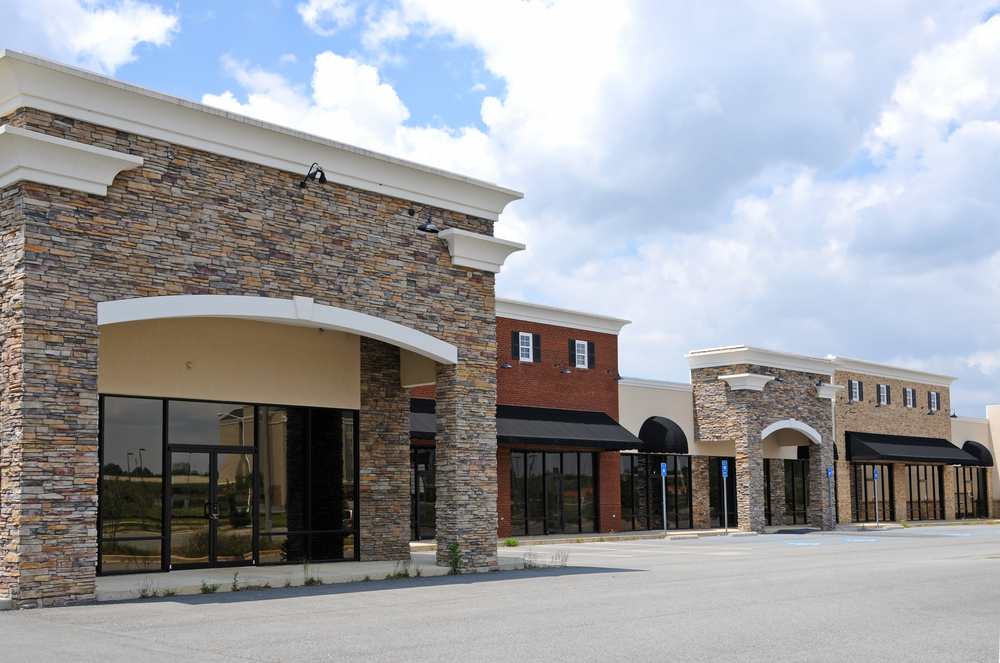5 Strategies to Accumulate Wealth Through a 1031 Exchange
The Power of Wealth Accumulation: Potentially Unlocking Opportunities with a 1031 Exchange
Under the esteemed Internal Revenue Code section 1031, the transaction structure known as a 1031 Exchange emerges as one of the most potentially advantageous provisions in the US tax code. This mechanism enables investors to defer taxes by selling investment property while simultaneously acquiring a replacement property. The allure of tax savings alone justifies the merits of a 1031 Exchange. However, it is the potential secondary benefits that often hold even greater value.
As a possible potent wealth-building tool, a 1031 Exchange empowers investors to harness a property's appreciation and leverage it without incurring tax penalties. Armed with increased buying power, investors can acquire high-quality assets, expand their portfolio, venture into new property types, and embrace new ownership strategies.
The ability to defer capital gains tax across a lifetime of real estate transactions offers a methodical approach to wealth accumulation. It paves the way for investors to build their wealth steadily while preserving the option to pass on this wealth to future generations, who may enjoy minimal or even tax-free obligations due to the stepped-up cost basis.
Through the strategic utilization of a 1031 Exchange, investors can embark on a journey seeking sustainable wealth growth and potentially create a lasting financial legacy for themselves and their heirs.
Unlocking the Power of 1031 Exchanges:
Deferring Capital Gains Taxes and Expanding Investment Opportunities
Section 1031 of the tax code presents a valuable opportunity for investors to engage in a "like-kind" exchange, enabling them to defer payment of capital gains taxes when selling investment property and using the proceeds to acquire new investment property. The Internal Revenue Service (IRS) defines "like-kind" broadly as real property held for business or investment purposes. This expansive definition grants investors the flexibility to exchange their investment property for a wide range of other real estate investments, regardless of differences in property type, quality, or location.
To ensure compliance with IRS regulations, there are strict deadlines that investors must adhere to during the exchange transaction. Firstly, investors must declare their intent to perform a 1031 Exchange before the close of their sale by initiating an Exchange with a Qualified Intermediary. Within 45 days from the sale of the relinquished property, the investor must identify potential replacement properties. Finally, the purchase of the replacement property must be completed within 180 days from the sale.
One notable advantage of 1031 Exchanges is that there is no limit to the number of transactions an investor can undertake, allowing for the deferral of capital gains taxes indefinitely. Taxes are only paid when a gain is realized, which occurs when the investor receives the proceeds from the sale. This deferral mechanism empowers investment property owners to attempt to strategically manage their tax obligations while expanding their investment portfolio and capitalizing on new opportunities.
By harnessing the potential of 1031 Exchanges, investors can defer capital gains taxes and unlock a pathway to the possibility of perpetual growth and investment expansion.
5 Strategies for Potential Wealth Building Through a 1031 Exchange DST
Real estate investors are increasingly utilizing 1031 Exchanges not only for tax savings but also to leverage the flexibility and opportunities they offer. These exchanges enable investors to adapt their investment strategies to respond to evolving market fundamentals, trends, and demand drivers. Here are five ways in which a 1031 Exchange has the potential to be utilized to grow your portfolio and build wealth:
1. Capitalize on Tax Deferral to Maximize ROI Equity
One of the primary financial advantages of a 1031 Exchange is the deferral of capital gains taxes, offering significant opportunities to maximize ROI equity. Capital gains taxes can substantially reduce sales proceeds and erode potential returns. Currently, the Federal long-term capital gains tax rates range from 15% to 20%, depending on the investor's annual income. In addition, there is often an overlooked Federal depreciation recapture tax of 25%, and sales may also be subject to the 3.8% Net Investment Income Tax.
It's important to note that most states impose their own capital gains tax or apply ordinary income tax rates to gains and accumulated depreciation. For example, California has a top state tax rate of 13.3%, while states like New Jersey, Oregon, and Hawaii have tax rates exceeding 10%. This cumulative effect can result in a significant tax burden, with potential capital gains taxes reaching as high as 42.1% upon the sale of an investment property.
However, through the strategic use of a 1031 Exchange, investors can defer these taxes and redirect the deferred tax funds into the purchase of another investment property. This deferral not only preserves capital but also increases buying power, allowing for the acquisition of properties with higher cash flow potential. By leveraging the tax benefits of a 1031 Exchange, investors can strive to optimize their returns and generate greater equity growth within their portfolios.
2. Attempting to Expand Wealth through Increased Buying Power
Engaging in a 1031 Exchange transaction empowers investors to leverage the appreciation of their properties while deferring taxes, resulting in increased buying power. The proceeds from the exchange can be utilized to acquire more substantial and higher-quality properties in sought-after markets, offering the potential for enhanced returns.
This strategic move not only boosts the possible income generated by the investments but also potentially augments the overall value of an investor's property portfolio. Additionally, it provides an opportunity to diversify the portfolio by gaining exposure to properties that may help reduce the overall risk profile. By maximizing their buying power through a 1031 Exchange, investors can effectively seek to grow their wealth and position themselves for long-term financial success.
3. Attempting to Mitigate Risk through Portfolio Diversification
One of the notable potential advantages of like-kind exchanges is the flexibility they provide in diversifying an investor's real estate portfolio. The broad definition of "like-kind" allows investors to exchange properties across different property types while still enjoying the possible benefits of a 1031 Exchange. For instance, an investor can transition from a multifamily property to an office, retail, or industrial property. This flexibility becomes particularly valuable for investors seeking to diversify their holdings or realign their investment strategy to tap into emerging markets.
By taking advantage of the broad definition of "like-kind," investors can respond to evolving market trends and capitalize on growing sectors. For instance, an investor may choose to sell a retail asset and exchange it for an industrial property, capitalizing on the surge in e-commerce. Alternatively, an investor with an office-focused portfolio may opt to diversify by exchanging into multifamily and retail assets, thereby striving to mitigate risk through portfolio diversification.
Following the transformative effects of the pandemic on the real estate industry, diversification has become even more crucial. The ability to adapt and diversify enables investors to navigate market uncertainties and seize opportunities presented by changing dynamics. Prudent investors understand the value of hedging against potential downsides and reducing risk through diversification, making it a prudent strategy in uncertain market conditions.
By utilizing the flexibility of like-kind exchanges, investors can strategically diversify their portfolio and effectively attempt to manage risk, ensuring long-term success in a dynamic real estate landscape.
4. Exploring New Investment Strategies
Traditional real estate investment often involves fee-simple ownership, where investors bear full responsibility for asset management, property maintenance, and associated costs. However, investors seeking to reduce their daily management burdens may consider exploring alternative investment strategies, such as exchanging fee-simple properties for Delaware Statutory Trust (DST) ownership.
DSTs offer a different ownership structure that allows investors to acquire fractional ownership in large institutional-grade real estate assets or portfolios. This ownership structure qualifies as like-kind property for a 1031 Exchange, providing investors with the opportunity to exit the day-to-day responsibilities of property ownership while deferring taxes that would otherwise be due.
By participating in DSTs, investors can benefit from the collective capital aggregated to acquire premium assets that may have been unattainable individually. This access to institutional-grade assets enhances portfolio diversification and offers exposure to high-quality properties that may be able to generate stable income and potential appreciation.
The advantages of a 1031 Exchange extend beyond tax deferral, as it also serves as a powerful tool for making strategic adjustments to an investor's portfolio. By considering investment strategies that leverage DST ownership, investors can streamline their management responsibilities while still benefiting from the potential income and value growth associated with real estate investment.
Overall, a 1031 Exchange offers numerous benefits, ranging from tax savings to strategic portfolio adjustments. By exploring alternative investment strategies, such as DST ownership, investors can strive to optimize their real estate investments and seek to achieve their wealth-building goals.
5. Striving to Create Generational Wealth through Tax Elimination for Beneficiaries
A notable advantage of a 1031 Exchange, including the ownership of Delaware Statutory Trust (DST) properties, is the potential for building generational wealth by eliminating taxes for beneficiaries. When an owner passes away, a "step-up in basis" occurs, which eliminates deferred capital gains, depreciation recapture, Net Investment Income Tax, and state-level taxes on the inherited property. The step-up in basis refers to the IRS's practice of erasing deferred taxes upon the owner's death.
In "community property" states, surviving spouses receive a full step-up in basis, and the same applies to beneficiaries such as children or grandchildren inheriting the property. This step-up in basis provides a significant tax advantage, as the inherited property's value is determined based on its fair market value at the time of the owner's passing. As a result, the beneficiaries can avoid paying substantial taxes on the appreciation and accumulated gains during the previous owner's lifetime.
From an estate planning perspective, 1031 DSTs offer an attractive solution. They can be seamlessly divided among beneficiaries without necessitating a co-management situation, whether involving family members, charitable organizations, or any other beneficiaries.
Additionally, because DSTs are illiquid and owned as a non-controlling interest, investors' CPAs can apply discounts when calculating the total estate value upon death. These discounts, typically ranging from 20% to 30%, reduce the overall estate value for estate tax calculations. This reduction can result in significant tax savings by minimizing the estate tax that would otherwise be due.
By utilizing the benefits of a 1031 Exchange, particularly through ownership of DST properties, investors can strategically plan for the possibility of generational wealth by eliminating tax liabilities for their beneficiaries. This approach strives to maximize the potential transfer of wealth and underscores the potential long-term advantages of incorporating a 1031 Exchange into estate planning strategies.
In Conclusion
1031 Exchanges offer real estate investors a powerful tool to align their properties with their financial and lifestyle goals. Delaware Statutory Trusts (DSTs) have emerged as a popular option due to their flexibility and ability to meet the objectives of property owners.
If you are considering a 1031 Exchange and wish to explore the potential benefits of DST replacement property, we encourage you to reach out to Perch Wealth. Our team of licensed 1031 Exchange professionals is ready to provide expert guidance and support. Contact us today for more information.
General Disclosure
Not an offer to buy, nor a solicitation to sell securities. All investing involves risk of loss of some or all principal invested. Past performance is not indicative of future results. Speak to your finance and/or tax professional prior to investing. Any information provided is for informational purposes only.
Securities offered through Emerson Equity LLC Member: FINRA/SIPC. Only available in states where Emerson Equity LLC is registered. Emerson Equity LLC is not affiliated with any other entities identified in this communication.
1031 Risk Disclosure:
- There’s no guarantee any strategy will be successful or achieve investment objectives;
- All real estate investments have the potential to lose value during the life of the investments;
- The income stream and depreciation schedule for any investment property may affect the property owner’s income bracket and/or tax status. An unfavorable tax ruling may cancel deferral of capital gains and result in immediate tax liabilities;
- All financed real estate investments have potential for foreclosure;
- These 1031 exchanges are offered through private placement offerings and are illiquid securities. There is no secondary market for these investments.
- If a property unexpectedly loses tenants or sustains substantial damage, there is potential for suspension of cash flow distributions;
- Costs associated with the transaction may impact investors’ returns and may outweigh the tax benefits













